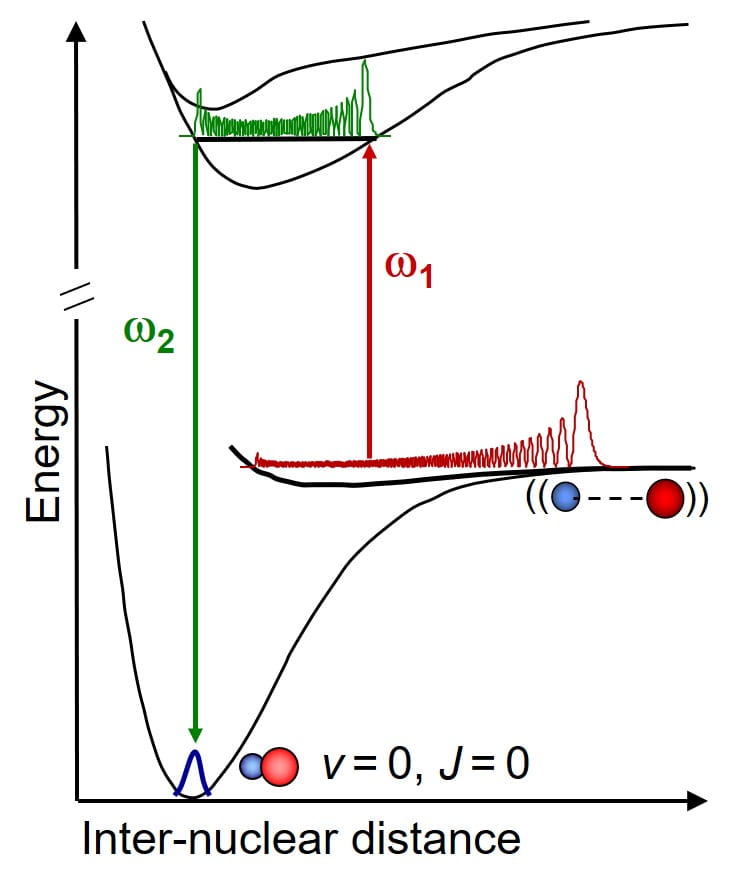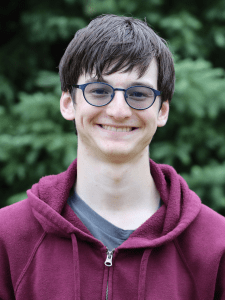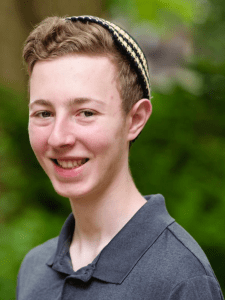Assembly of ultracold molecules from laser-cooled atoms

The tunable, anisotropic, long-range electric dipole-dipole interaction that exists between heteronuclear molecules is fundamentally different from the contact interaction that exists in atomic systems. In order to study this interaction, we are interested in creating and trapping a large sample of ultracold polar molecules. To achieve the ultracold temperatures necessary to observe novel behavior, we extended the mature techniques associated with atomic cooling to molecular systems.
In a prior generation of work, we made the first demonstrations of assembling polar molecules from laser-cooled alkali atoms—in particular, RbCs molecules assembled from Rb and Cs atoms.
In these experiments, we began with cold (~100 μK), dense samples of atomic rubidium and cesium held in traditional magneto-optical traps. We illuminated these samples with a resonant laser beam that promotes colliding atomic pairs into a bound, but electronically-excited, molecular state. This process of binding atoms into molecules using laser light is known as “photoassciation”. Following photoassociation, the excited electronic state rapidly decays into rovibrational levels of the ground electronic state, which have long lifetimes. In our earliest work with RbCs, we primarily formed weakly bound vibrational levels in this way, but showed it was possible to transfer them into the vibrational ground state with a pair of additional laser pulses. Later, a more judicious choice of the excited (photoassociation) state allowed molecules to spontaneously decay directly to the absolute rovibrational ground state (v=J=0) of RbCs. This allowed us to continuously produce molecules in this well-defined, stable state.
We are now beginning a new effort to assemble ultracold molecules from atoms. Here we will use silver (Ag) atoms as one of the constituents. Based on our suggestion, it has recently been shown via ab initio theory that alkali-Ag and alkaline earth-Ag molecules are extremely polar, due to the surprisingly high electron affinity of Ag. We are particularly interested in using assembled molecules of this type for next-generation EDM searches.
Team members

Mohit Verma

Shaozhen Yang

Wesley Cassidy

Rohan Kapur

Rachel Dey

Ryan Rosenthal
